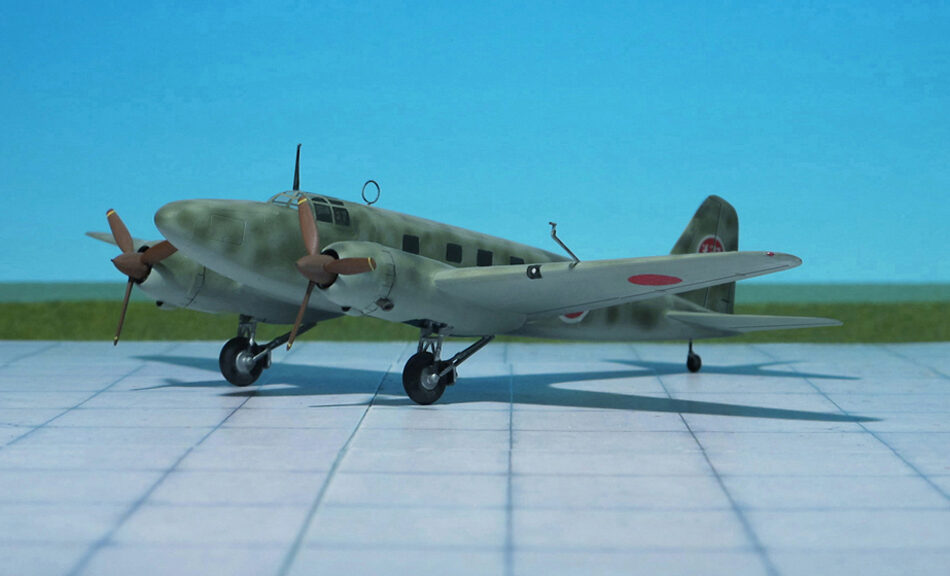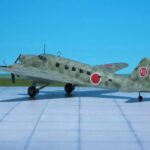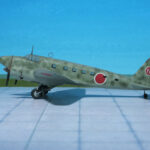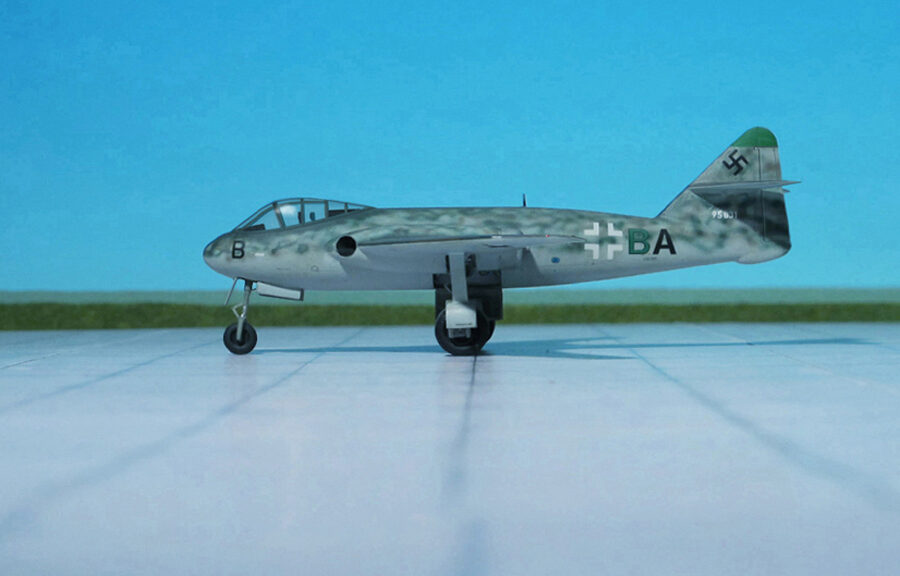TYPE: Transport and passenger aircraft
ACCOMMODATION: Crew of four plus 11 passengers or equivalent load
POWER PLANT: Two Mitsubishi Ha-l02 radial engines, rated at 1,080 hp each
PERFORMANCE: 292 mph at 19,000 ft
COMMENT: In 1938, when the Mitsubishi Ki-21 heavy bomber began to enter service with the Imperial Japanese Army, its capability attracted the attention of the Imperial Japanese Airways. In consequence a civil version was developed and this, generally similar to the Ki-21-I and retaining its power plant of two 950 hp Nakajima Ha-5 KAI radial engines, differed primarily by having the same wings transferred from a mid to low-wing configuration and the incorporation of a new fuselage to provide accommodation for up to 11 passengers.
Completed in July 1940 the prototype made its first flight in August, and by the end of the year, despite the loss of the fourth aircraft during test flight, quantity production was authorized for both commercial and military use. A total of 101 aircraft of the first production model were built by Mitsubishi between 1940 and 1942 and designated Army Type 100 Transport Model1 (Ki-57-I) by the Army and MC-20-I by civil authorities. A small number of Ki-57-I were transferred to the Japanese Navy and designated Navy Type 0 Transport Model 11 or L4M1 by that service.
Operated by the Army and Navy as a paratroop transport, communication and logistic support aircraft and by Dai Nippon Koku K.K. as a passenger transport on scheduled services as well as on military contract operations, the aircraft, named “Topsy” by the Allies, was met in all theatres of operation. Although most of the time the type performed unspectacular but necessary tasks, it earned its share of fame on February 1942, during a Japanese paratroop attack on the aerodrome and oil refineries around Palembang.
In May 1942 an improved version of the aircraft, powered by two 1,080 hp Mitsubishi Ha-102 radials housed in redesigned nacelles and incorporating minor equipment changes, replaced the Ki-57-I on the assembly lines. A total of 406 aircraft were built for use by Dai Nippon Koku K.K. as MC-20-II and by the Japanese Army as Ki-57-II, Army Type 100 Transport Model 2. Plans to have the aircraft manufactured by Nippon Kokusai Kogyo K.K. failed to materialize and the last Ki-57-II was delivered by Mitsubishi in January 1945.
After seeing active service throughout the war a few MC-20/Ki-57 aircraft survived and were operated under strict Allied control by Dai Nippon Koku K.K. until October 1945, when all Japanese air activities were prohibited (Ref.: 1, 24).


























